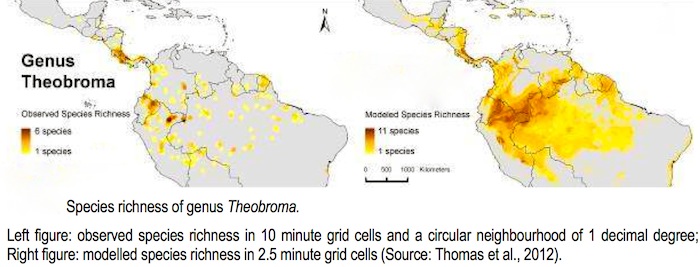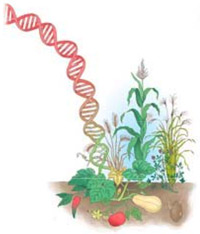Cacáo, cocoa & chocolate have played profond roles in history & in shaping modern globalism. A complex web of contacts, connections, collaborations of commerce & culture – all nodes to the various “C-spots” – in an enormous value chain spanning millennia over thousands of miles involving millions of people. The total effort required to produce & deliver finished-chocolate is planetary & enduring. Here then…
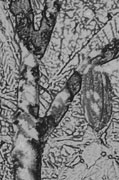 10,000 – 15,000 Years BCE
10,000 – 15,000 Years BCE– origins of the tree
Theobroma cacao in, all likelihood, the
Amazon Rainforest, from whose seeds chocolate would eventually be derived; the earlier date would coincide with the founding populations that peopled the Americas.
7,900 BCE –
The Popol Vuh, a sacred text of Mesoamericans, appears to give a long count calendar date for the first sprout of maize & – by symbolic though not necessarily historical association – cacáo, as 1 Manix (
manixliterally ‘worker with the Earth’), celebrating their invention on Day One, around 7,900BCE, probably along the Pacific Coast near current day El Salvador. This mythology coincides with the oral history of the Lenca enclave there who call themselves ‘the people of corn & chocolate’.
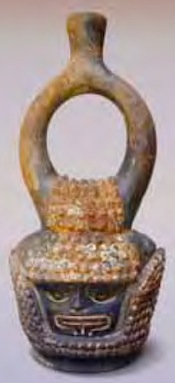
3,500 – 3,300 BCE – The archaeological site at Santa Ana-La Florida, Zamora Chinchipe, along the eastern slopes of the Andes mountains in present-day
Ecuador; former home to the Mayo Chinchipe culture which extended all the way from the tropical rainforest at the headwaters of Rio Chinchipe near the current city of Valladolid (altitude: 1,500 meters) to… an increasingly dry region with xerophytic vegetation as the river descends until it empties in the Rio Marañón close to the Peruvian city of Bagua (400 meters) — an area now inhabited by the vaunted Shuar.
Inside several ceramic & stone vessels, quite innovative in form & style — which served both in ceremonial settings (burials for example) & domestic kitchen ware – modern Carbon-14 Dating reveals organic residues of a diet rich in pepper (
Capsicum spp.), beans (family
Fabaceae), cassava (
Manihot esculenta), yams (
Dioscorea spp.), sweet potato (
Ipomoea spp.), corn (
Zea mays), coca, datura, & yage. Additionally, ancient traces of starch granules of
cacáo (
Theobroma spp.), plus cacao de monte (
Herrania spp.), are also detected.
Cacáo appears to have been used in several ways, including a liquid, since its residues in some vessels designed with very narrow necks suggest it was poured from them.
The Mayo Chinchipe cultivated the
Nacional genotype cacáo, at around 1,040 meters above sea level (an altitude higher than formerly considered possible).
Furthermore, seashells found throughout the Chinchipe basin leave clues to interactions between the Mayo Chinchipe & their contemporaries on the Pacific coast, particularly the Valdivia culture. Shells were traded for their symbolic value rather than for food. The spondylus shell, for instance, was linked to fertility by many Andean peoples in antiquity & conch shells today are still used for trumpets during indigenous rituals.
Speculation that cacáo might’ve been exchanged for these seashells, in an economic network stretching between the
Amazon & the Pacific, leads on perhaps to farther voyages… particularly north to cacáo’s eventual center of domestication – Mesoamerica – where it would later be revered by the great
Mayan civilization.
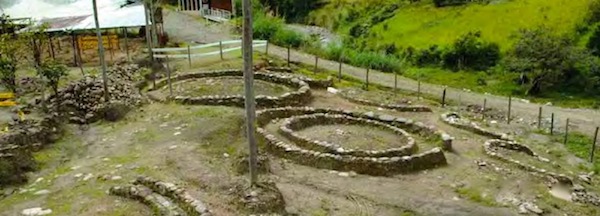
Home site (above) off the central plaza points to a structured village plan separating domestic areas from public ones for civic-ceremonies, including a cemetery reserved for the elite. Put together, these elements tell of a sedentary society based in agriculture with specialization of labor & elements of social hierarchy.
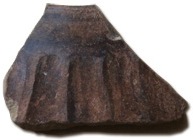 1,900 – 1,800 BCE
1,900 – 1,800 BCE – among the original cultivators of cacáo, The Mokaya (“People of the Corn” ironically), during Barra Ceramic Phase (thin-walled, finely finished & elaborately decorated pottery vessels); Paso de la Amada, Xoconochco (present day Soconusco), Pacific Coast of Chiapas,
Mexico.
In 2008, only 1 of 16 sherds suspected for cacáo-use tested positive for theobromine (a key marker for chocolate) inside a Bayo Brown slipped tecomate with vertical fluting on its exterior surface (see figures left & below) found atop Structure 4 in Mound 6 — referred to as the “Chief’s House”. Taken as a whole complex, Mound 6 & its ascending structures represent a time-lapse microcosm of a shift from simpler egalitarian agriculture to stratified centralized power. Little can be gleaned however about the details behind cacáo’s usage but this find raises questions, both functional (for
chicha [alcoholic chocolate]?
atole [chocolate / maize draft]? &/or possibly a balsamic-like condiment?) & social (how pervasive in the community? restricted to elites? or pre-chiefdom & for everyone?)
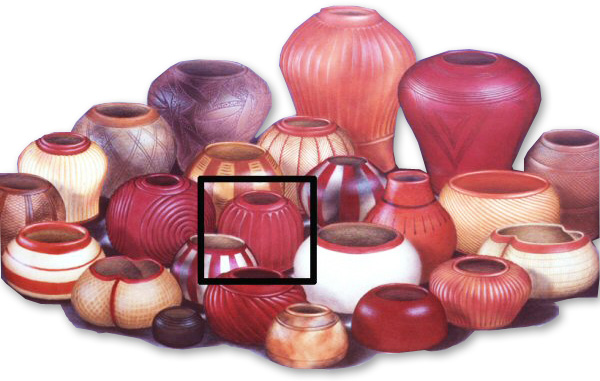
Above: Mokaya tecomatl & xicalli vessels from Paso de la Amada (drawing by Ajax Moreno); Upper Right: actual ceramic shard from the vessel (of the inset bordered in black) which tested positive for trace cacáo on its interior surface. Vessels eventually became ‘social currency’ among Mesoamericans, exchanged at feasts & ceremonial visits, preserved as heirlooms & funerary companions in the afterlife.
1,800 – 1,600 BCE - an array of pottery vessels recovered at the Olmec (
olmeca: “rubber people”, derived from the Nahuatl word for rubber –
ulli / olli) capital of San Lorenzo & its neighboring ritual site at El Manati test theobromine-positive, strongly indicating they once contained cacáo, most likely in some liquid form. Of particular curiosity: the finding of several hundred vessels atop a mass grave for sacrificial victims at the height of San Lorenzo’s power. Taken altogether, they furnish ample evidence of a well-attended, elite mortuary rite which included the preparation of stored cacáo draughts that were ritually served & imbibed. This service ware may have then been intentionally broken during the ceremony in an conspicuous undertaking of wealth destruction. By thus engraving cacao & human sacrifice in such a pivotal & integral way into the Mesoamerican cosmic theater that involves birth, death & rebirth, the Olmec nobility legitimized their earthly prestige & divine authority with audacious self-interest.
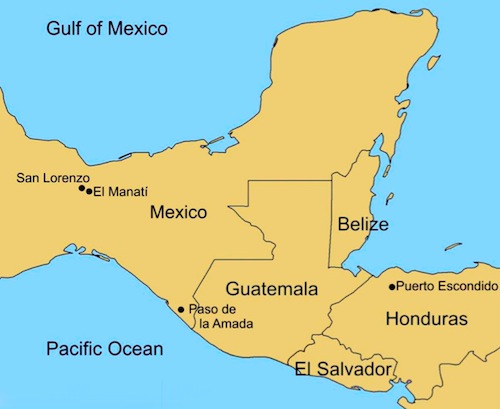 (above) map showing locations of early Mesoamerican archaeological sites where cacáo was consumed; (below) pottery vessels found at San Lorenzo that tested postive for cacáo residues used for storage, preparation & drinking (from “Cacao Use & The San Lorenzo Olmec” by Powis, Cyphers, et.al., 2011)
(above) map showing locations of early Mesoamerican archaeological sites where cacáo was consumed; (below) pottery vessels found at San Lorenzo that tested postive for cacáo residues used for storage, preparation & drinking (from “Cacao Use & The San Lorenzo Olmec” by Powis, Cyphers, et.al., 2011)
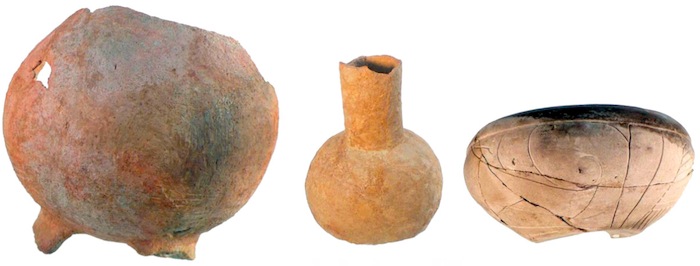 1,150 BCE
1,150 BCE – Puerto Escondido, Ulúa Valley,
Honduras, Caribbean coast; Olmec-related village speculatively turns cacáo pulp into a wine
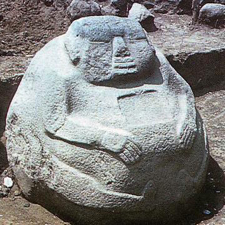 1,000BCE – 200CE
1,000BCE – 200CE –
Chocolá: the very epicenter perhaps, lying on a plateau below volcanic mountain ridges at 500-1000m altitude, for a vitally important chain of revered cacáo groves in all of chocolate lore.
Along the humid piedmont zone of the Pacific slope of southern Mesoamerica extending from
Xoconochco (Soconusco) Chiapas in modern
Mexico, south thru the prime growing zone in
Guatemala (Suchitepequez, Mazatenango, Escuintla, Guazacapán) & onward to Sonsonate (El Salvador), cacáo stood central — its worth in commerce & cosmology rivaled only by maize.
Early signs of high complexity at Chocolá are attributed to intense cultivation of cacáo, irrigated by hydraulic water springs, for the lucrative long-distance trade network. It may have indirectly borrowed from Xoconochco up the coast – an argument advanced by Yale
Prof. Michael Coe in suggesting that the monumental stone-sculptors of Izapa (Xoconocho) form the connective tissue between the earlier Olmec & the later Maya that loosely ties them all together. If so, this represents a key development for the SMA (Southern Maya Area) &, plausibly, a seminal link in the rise of Classic Mayan civilization, architecture, city-states, hieroglyphic literacy, detailed ceramics & advanced math / astrology.
Many believe that cacáo culture reached its zenith there & then… the Maya naturally selecting prized cultivars for their hi-flavor, bringing forth the finest cacáo ever cultivated on Earth. Quite possibly true insofar as Friar Francisco Ximénez, noted translator of the holy Mayan text
Popul Vuh, inventoried the single-origin cacáos in the Americas, saying that the absolute best grew along this Pacific coast.
Over the centuries – millennia really – the Maya developed & refined chocolate craft. They planted for variety & diversity on a stunning scale – especially by modern standards. Each selection based on desirable traits & described by respective fruit colors: (
ix sac [white],
ix kan [yellow],
ix chak [red],
ix morado [purple], & even
ix box[black]).
That Chocolá’s environs & era largely coincides & overlaps with the distribution of ‘potbelly sculpture’, which appears around the Late Preclassic (c. 200CE), comprises the heart & guts for what might affectionately be termed the geographic ‘chocolate potbelly’ of cacáo.
600 BCE – Colha, Mayan stone tool production center (modern-day northern
Belize), shows further archeological evidence of cacáo residues in drinking vessel
500 BCE – chemical markers for cacáo found on flat plates at Paso del Macho, Yucatán, Mexico strongly suggest a chocolate type sauce, condiment &/or garnish in cuisine other than a beverage
450 CE-
Ancient Maya City of Copán (
Honduras), Mayan Classic Period; móle-prototype of animal bones (turkey & fish) with cacáo, as well as tamale platter with cacáo
The “Dazzler Vase” (below), arguably the most famed vessel from all of Meoamerica, recovered from within the royal ‘Margarita Tomb’ in Copán,
Honduras. It sports a goggle-eyed figure peering out the window of a talud-&-tablero style structure that eerily resembles another tomb nearby called the ‘Hunal’. Mayanist David Stuart views the figure as the spirit of Copán founder King K’inch Yax K’uk’ Mo’ looking in on his Queen wife (& mother of their son King K’inich Popol Hol) buried in the Margarita Tomb across from his own royal crypt at Hunal. A well-preserved layer of cacáo residue lines the bottom of the vase, retaining the hue of dark chocolate, the remains of a possible ritual draft. The intent is that cacáo would sustain the departed on their long journey thru the underworld… the finest offering made even more sacred by its escorting them.
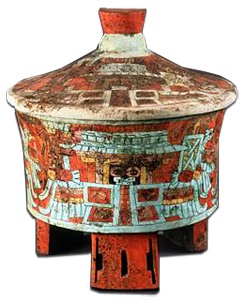 590 CE
590 CE – Home-Grown Chocolate: Joya de Cerén (The Jewel of Cerén in the Valley of Zapotitlán, El Salvador), a Mayan agricultural village & Pompeii of the New World, preserves a young cacáo tree with a flower just opening up in ash – from the nearby volcano Loma Caldera – the oldest known cacáo tree in existence; immediately south of Structure 4, next to the storehouse for Household 4 where inside that building were pots with cacáo in them

(photo courtesy Payson Sheets who led the recovery of Cerén in 1976)
683 CE – death of King Pakal (Ajaw K’inich Janaab’ Pakal), Palenque / B’aakal (
Mexico). Arguably the most renowned of all Mayan monarchs anywhere, in addition to the longest ruling (more than 3 K’atuns = 68 years). Palenque / B’aakal flourished during Pakal’s reign to eclipse the great city of Tik’al. Carved stone-relief on the North & South ends of his famed sarcophagus depict his mother, Queen Zac K’uk’, as re-born thru a cacáo tree.
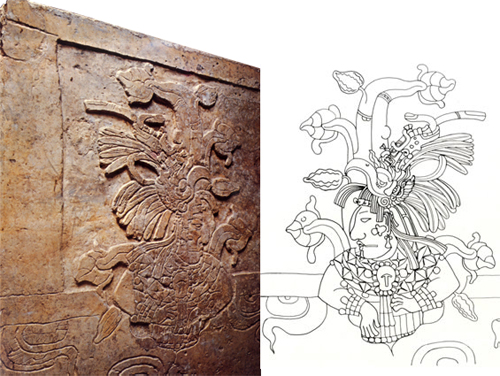
Bas-relief of Queen Zac K’uk’ on the North End of her son King Pakal’s sarcophagus (left); mirror image (right) drawn by Merle Greene Robertson
770 CE – Earliest Chocolate in North America? Site 13 near Canyonlands in present-day Utah… home to peoples who grew corn & dwelt in subterranean houses. Ceramic bowls excavated from the area contain traces of theobromine & caffeine — two markers for chocolate derived from cacáo nuts imported from thousands of miles away to the south in a trade network that included parrots & copper bells among other goods.
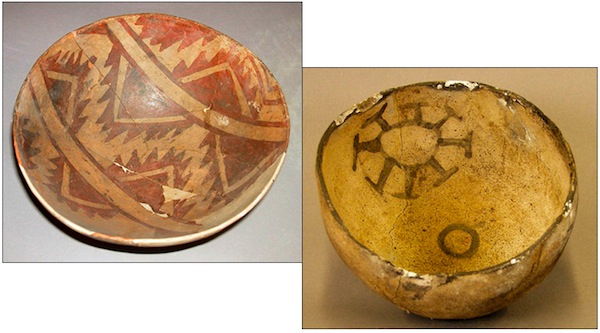
‘… and a bowlful of chocolate, please.’ ‘Large or small?’ 8th century pottery vessels from the American Southwest that tested positive for trace amounts of chocolate compounds (Peabody Museum of Archeology & Ethnology, Harvard University)
790 CE – Bonampak / Bòonam Pak’ (Mayan for ‘
Painted Wall’) Chiapas,
Mexico; fresco of cacáo bundle containing 40,000 beans as tribute to the king on the Bonampak Mural – considered the pictorial encyclopedia of a Mayan city.....................

















 590 CE – Home-Grown Chocolate: Joya de Cerén (The Jewel of Cerén in the Valley of Zapotitlán, El Salvador), a Mayan agricultural village & Pompeii of the New World, preserves a young cacáo tree with a flower just opening up in ash – from the nearby volcano Loma Caldera – the oldest known cacáo tree in existence; immediately south of Structure 4, next to the storehouse for Household 4 where inside that building were pots with cacáo in them
590 CE – Home-Grown Chocolate: Joya de Cerén (The Jewel of Cerén in the Valley of Zapotitlán, El Salvador), a Mayan agricultural village & Pompeii of the New World, preserves a young cacáo tree with a flower just opening up in ash – from the nearby volcano Loma Caldera – the oldest known cacáo tree in existence; immediately south of Structure 4, next to the storehouse for Household 4 where inside that building were pots with cacáo in them


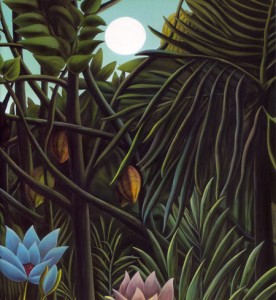 Practically every popular resource divides Theobroma cacao into 3 camps: Criollo, Forastero, & Trinitario; an overly simplistic & deeply flawed scheme. We reject this particular division.
Practically every popular resource divides Theobroma cacao into 3 camps: Criollo, Forastero, & Trinitario; an overly simplistic & deeply flawed scheme. We reject this particular division. 
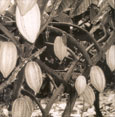 Chocolate craft begins with seeds (often dubbed “Jungle M&Ms”) from zeppelin-shaped fruits referred to as ‘pods’. Botanists loosely categorize them an epigynous berry or pepo. They hang like so many colorful lanterns to lure pollinators & porters (midges, monkeys & man) on a tree whose species name is cacáo, one of 22 species or so (15 of which are edible with Bicolor, Grandiflorum & Angustiflorium the other relatively well-known / cultivated members) belonging to the genus Theobroma.
Chocolate craft begins with seeds (often dubbed “Jungle M&Ms”) from zeppelin-shaped fruits referred to as ‘pods’. Botanists loosely categorize them an epigynous berry or pepo. They hang like so many colorful lanterns to lure pollinators & porters (midges, monkeys & man) on a tree whose species name is cacáo, one of 22 species or so (15 of which are edible with Bicolor, Grandiflorum & Angustiflorium the other relatively well-known / cultivated members) belonging to the genus Theobroma.
